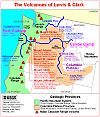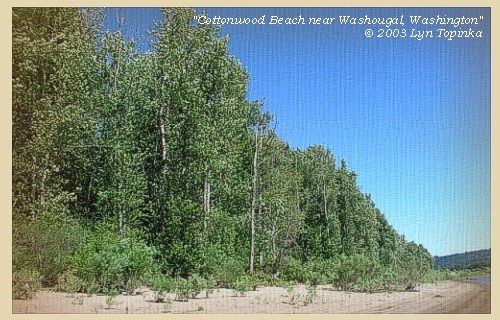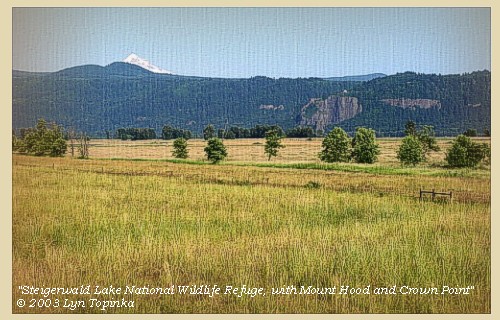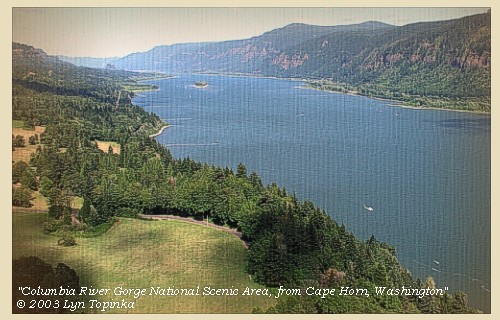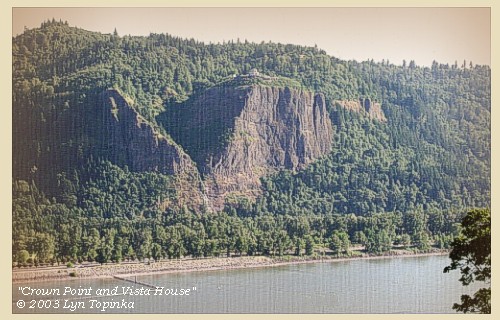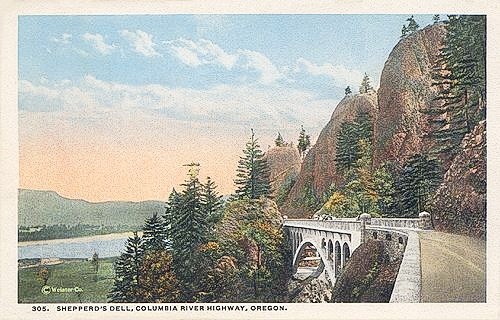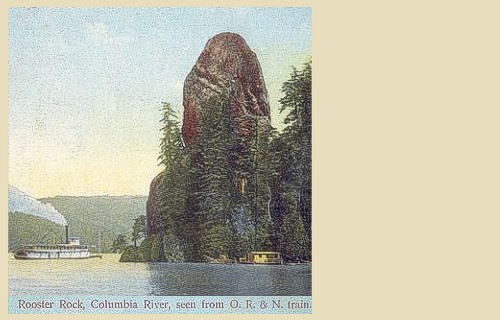The Volcanoes of
Lewis and Clark
Lewis and Clark
|
April 6 - 8, 1806 Columbia River Gorge - Cottonwood Beach to Shepperd's Dell |
|
Home
The Volcanoes of Lewis and Clark Map of the Journey Volcanoes, Basalt Plateaus, Major Rivers, etc. The Volcanoes Mount Adams, Mount Hood, Mount Jefferson, Mount Rainier, and Mount St. Helens CALENDAR of the Journey October 1805 to June 1806 Along the Journey Pacific Northwest Maps - Columbia River, Volcanoes, Flood Basalts, Missoula Floods, Geology, etc. The Corps of Discovery The Journey of Lewis and Clark About the Reference Materials The Journals, Biddle/Allen, DeVoto, Gass, Moulton, Topo Maps, and others USGS Lewis and Clark Links Links to USGS Websites highlighting the Lewis and Clark Journey Resources Publications Referenced and Websites Visited |
PREVIOUS
April 4-5 Back on the Columbia, The Willamette Valley |
April 6-8
Columbia River Gorge, Cottonwood Beach Camp to Shepperd's Dell Cottonwood Beach, Steigerwald Lake NWR, Mount Hood, Columbia River Gorge National Scenic Area, Crown Point, Shepperd's Dell State Park, Rooster Rock and Rooster Rock State Park |
CONTINUE
April 9 Columbia River Gorge, Shepperd's Dell to Bonneville |
|
Heading for Home - April 1806
Columbia River Gorge - Cottonwood Beach to Shepperd's Dell |
| Between March 31 and April 5, 1806 Lewis and Clark camped near present day Cottonwood Beach, just upstream of Washougal, Washington. |
| Sunday, April 6, 1806 |
| Having made our preparations of dried meat, we set out [from Cottonwood Beach, just upstream of Washougal, Washington] ...... |
| by nine o'clock, and continued along the north side of the river [Washington State] for a few miles [today this area is part of the Steigerwald Lake National Wildlife Refuge], and then crossed to the river [Oregon] to look for the hunters, who had been sent forward the day before yesterday. |
| "... passed a beautiful prairie on the north side, which we could not see for the fog as we went down; ..." [Gass, April 6, 1806] |
| Lewis and Clark first passed this area on November 3, 1805, a day which "The Fog So thick this morning that we could not See a man 50 Steps off". Mount Hood, Oregon, can be seen along this stretch of the river. |
| Lewis and Clark are entering the scenic Columbia River Gorge. |
| As Lewis and Clark entered the Columbia River Gorge, the massive basalt cliff of Crown Point was on their right. |
| We found them at the upper end of the bottom with some Indians, for we are never freed from the visits of the natives. They had killed three elk, and wounded two others so badly, that it was still possible to get them. We therefore landed, and having prepared scaffolds and secured the five elk, we encamped for the night [Shepperd's Dell vicinity] ...... |
| "... proceeded on about 9 miles and came to our hunters' camp. They had killed 5 elk, so we halted, sent out for the meat and began to dry it. We are now at the head of the Columbia valley; which is a fine valley about 70 miles long, abounding with roots of different kinds, which the natives use for food, especially the Wapto roots which they gather out of the ponds. The timber is mostly of the fir kind, with some cherry, dogwood, soft maple and ash; and a variety of shrubs which bear fruit of a fine flavour, that the natives make use of for food. ..." [Gass, April 6, 1806] |
| "... we Camped here for the night in a Small willow bottom near high river hills on South Side ..." [Ordway, April 6, 1806] |
| "... from the appearance of a rock [Rooster Rock] near which we were encamped on the 3rd of November last [in error, see below] I could judge better of the rise of the water than I could at any point below. I think the flood of this spring has been about 12 feet higher than it was at that time; the river is here about 1 1/2 miles wide; it's general width from the beacon rock which may be esteemed the head of tide water, to the marshey islands is from one to 2 miles tho' in many places it is still wider. it is only in the fall of the year when the river is low that the tides are persceptable has high as the beacon rock. [Beacon Rock, see April 9, 1806 entry] ..." [Lewis, April 6, 1806] |
| Lewis and Clark's camp of November 3, 1805 was near Government Island, and not near Rooster Rock. Their camp of November 2, 1805 was near Rooster Rock. |
|
|
|
The Camp - April 6 through April 8, 1806:
Lewis and Clark camped for three nights in the area of today's Shepperd's Dell State Park, Oregon. |
Monday, April 7, 1806
| The weather having been fair and pleasant, had dried a sufficient quantity of meat to serve us far as the Chopunnish, with occasional suppies, if we can procure them, of dogs, roots, and horses. In the course of the day several parties of Shahalas, from a village eight miles above us, came to visit us, and behaved themselves very properly, except that we were obliged to turn one of them from the camp for stealing a piece of lead. Every thing was now ready for our departure. |
|
|
|
The Camp - April 6 through April 8, 1806:
Lewis and Clark camped for three nights in the area of today's Shepperd's Dell State Park, Oregon. |
Tuesday, April 8, 1806
| In the morning The wind blew with great violence, and we were obliged to unload our boats, which were soon after filled with water. The same cause prevented our setting out to-day; we therefore despatched several hunters round the neighbourhood, but in the evening they came back with nothing but a duck. ...... |
|
|
|
The Camp - April 6 through April 8, 1806:
Lewis and Clark camped for three nights in the area of today's Shepperd's Dell State Park, Oregon. |
| Home | Previous | Continue |
If you have questions or comments please contact: GS-CVO-WEB@usgs.gov
June/July 2004, Lyn Topinka
The Volcanoes of Lewis and Clark Home Page | CVO Home Page

